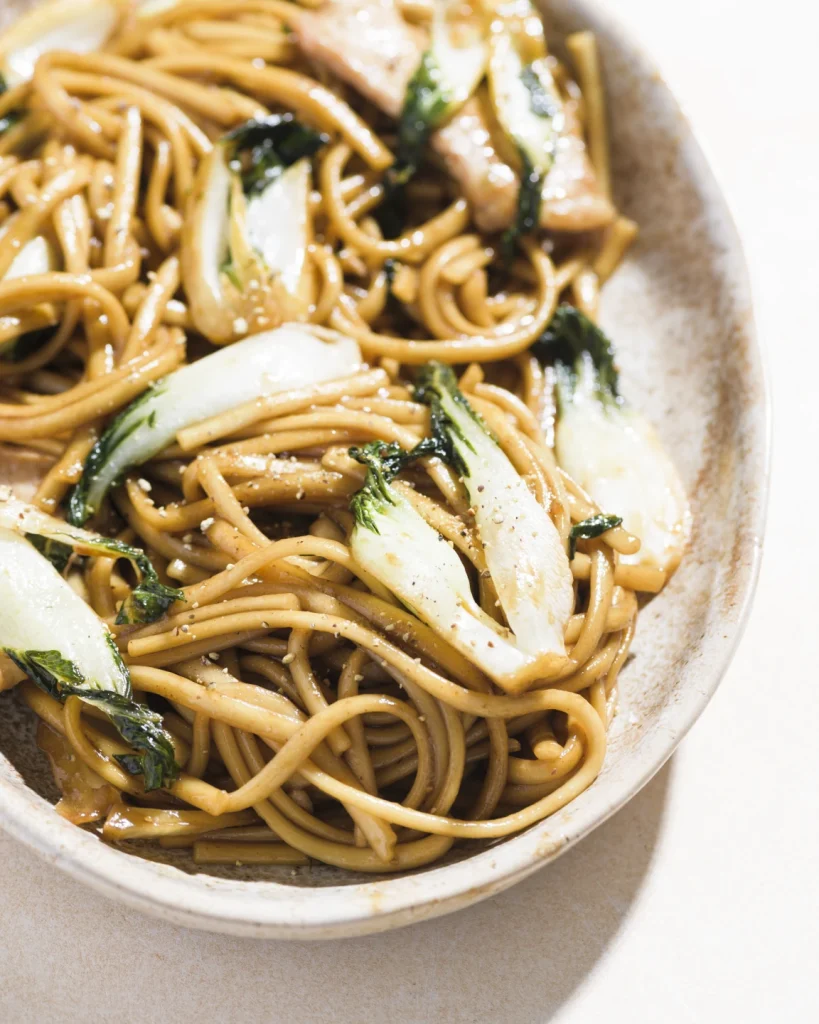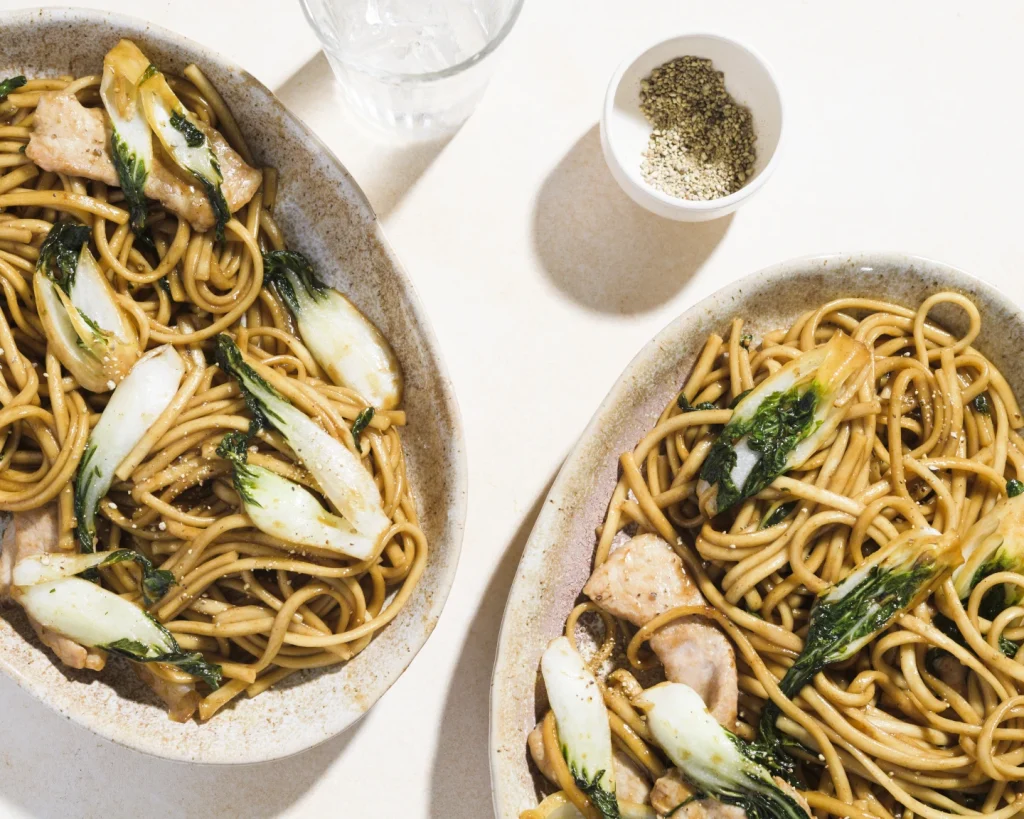In cultures around the world, the arrival of the new year is often celebrated with special foods that are believed to bring luck and prosperity.
These culinary traditions, rooted in history and passed down through generations, offer a glimpse into the rich tapestry of global customs and beliefs.
From East Asia to the Western world, the significance of certain ingredients and dishes in ushering in the new year is a testament to the enduring power of food as a symbol of hope and renewal.
One such tradition can be found in East Asia, where the preparation of special foods for the new year is deeply ingrained in the cultural fabric.
Noodles, for instance, hold a symbolic significance as they are believed to represent longevity. The shape and length of the noodles are thought to mirror the extension of one’s life, and as such, they are often featured in new year dishes as a harbinger of good fortune.
In addition, greens such as bok choy are associated with prosperity, signifying the growth and abundance that one hopes to experience in the coming year.
To embrace the spirit of the new year and partake in these age-old customs, one can turn to a Shanghai-style stir-fry that encapsulates the essence of these traditions.
The dish, known as cu chao mian, is a delightful amalgamation of flavors and textures that is sure to delight the palate.
Drawing inspiration from the culinary heritage of East Asia, this stir-fry is a testament to the enduring appeal of traditional dishes in a modern context.
At the heart of this delectable creation are the noodles, which play a pivotal role in defining the character of the dish.
Typically, cu chao mian features thick, chewy, and wheaty noodles that lend a robust and satisfying quality to the stir-fry.
However, in adapting this beloved dish for American home cooks, the recipe calls for the use of Japanese udon noodles, which offer a similar appearance and texture.
This substitution not only makes the dish accessible to a wider audience but also showcases the versatility of ingredients in the culinary realm.
Complementing the noodles are the vibrant and nutritious bok choy, a vegetable that brings a delightful contrast of textures and flavors to the stir-fry.
Its tender leaves and crisp bases make it a versatile and sought-after ingredient, adding depth and visual appeal to the dish.
The meticulous preparation of the bok choy, including washing and drying to remove any residual grit, underscores the attention to detail and respect for ingredients that are hallmarks of traditional cooking practices.
Furthermore, the addition of succulent pork loin, marinated in a harmonious blend of soy sauce, Shaoxing wine (or dry sherry), sugar, and cornstarch, elevates the dish to new heights.
The interplay of flavors and textures, coupled with the skillful execution of the stir-fry technique, results in a culinary masterpiece that is as visually alluring as it is delectable.
It is worth noting that the absence of a traditional sauce in this stir-fry is compensated by the noodles’ ability to absorb the rich flavors, imparting a distinctive and appetizing hue to the dish.
In essence, this Shanghai-style stir-fry embodies the essence of culinary traditions that have endured for centuries, offering a glimpse into the cultural significance of food in celebrating the new year.
As we embark on the year 2024, embracing the spirit of luck and prosperity through the preparation and enjoyment of symbolic dishes such as cu chao mian serves as a poignant reminder of the enduring power of food to unite us in celebration and hope for the future.
In conclusion, the time-honored traditions surrounding the preparation of special foods for the new year serve as a testament to the enduring significance of culinary customs in shaping our cultural identity and fostering a sense of unity and optimism.
As we partake in these age-old rituals, we not only savor the flavors of tradition but also pay homage to the wisdom and ingenuity of our ancestors.
The Shanghai-style stir-fry, with its blend of symbolic ingredients and time-honored techniques, stands as a fitting tribute to the rich tapestry of global culinary heritage.
As we savor each delectable bite, we are reminded of the timeless allure of food as a symbol of hope, renewal, and the promise of a brighter future.
In a world where traditions evolve and cultures intersect, the act of preparing and sharing special foods for the new year remains a cherished practice that transcends boundaries and unites us in celebration.
As we embrace the customs and flavors that define our cultural heritage, we honor the legacy of those who came before us and pave the way for future generations to partake in the rich tapestry of global culinary traditions.
Let us savor each moment and each dish, as we usher in the new year with a spirit of joy, abundance, and the enduring promise of good fortune.
In this spirit, the Shanghai-style stir-fry from the book “Noodles” serves as a poignant reminder of the timeless appeal of culinary traditions and the enduring power of food to bring us together in celebration.
As we embark on the journey that is the year 2024, let us draw inspiration from the rich tapestry of global culinary heritage and savor the flavors of tradition, unity, and hope.
The art of cuisine is a constantly evolving and dynamic field, where chefs and cooks alike are not afraid to push the boundaries of tradition and experiment with new flavors and ingredients.
One such example of this culinary innovation is the Shanghai-style fried noodles, which embraces a fusion of flavors from both Eastern and Western culinary traditions.
This dish, while rooted in the traditional techniques of Shanghai cuisine, incorporates unexpected ingredients such as oyster sauce and balsamic vinegar, resulting in a delightful blend of sweet, savory, and umami flavors.
The addition of oyster sauce to the Shanghai fried noodles may raise eyebrows among purists, as it is not a typical ingredient in this regional dish.
However, the decision to incorporate oyster sauce is a deliberate choice aimed at introducing a subtle sweetness and a rich umami depth to the dish.
Oyster sauce, with its complex flavor profile derived from oysters, salt, sugar, and soy sauce, adds a unique and indulgent dimension to the noodles, elevating the overall taste experience.
Similarly, the use of balsamic vinegar, an unexpected departure from the traditional Chinese black vinegar, is another intriguing element of this recipe.
Balsamic vinegar, renowned for its rich, dark color and complex, sweet-tart flavor, serves as a compelling substitute for the malty, subtly sweet Chinese black vinegar that is traditionally used in Shanghai cuisine.
The acidity of the balsamic vinegar not only complements the deep, savory notes of the dish but also imparts a nuanced tanginess that harmonizes with the other flavors present.
The marriage of these diverse ingredients in the Shanghai-style fried noodles showcases the ingenuity and adaptability of culinary traditions.
The dish exemplifies the willingness of chefs to embrace new ingredients and techniques, transcending the constraints of tradition to create a truly remarkable culinary experience.
This innovative approach to cooking reflects the evolving nature of gastronomy, where the boundaries between different culinary traditions are blurred, and new and exciting flavor combinations emerge.
In the recipe for Shanghai-style fried noodles, the fusion of Eastern and Western flavors is beautifully showcased.
The careful balance of soy sauce, Shaoxing wine, white sugar, and cornstarch creates a flavorful marinade for the pork loin chop, infusing it with a delightful blend of sweet and savory notes.
The addition of ground white pepper and toasted sesame oil further enhances the depth of flavor, while the use of udon noodles provides a comforting and substantial base for the dish.
The cooking process itself is a testament to the artistry and precision required to create this culinary masterpiece.
The careful stir-frying of the marinated pork loin chop, the addition of the bok choy, and the incorporation of the oyster sauce and balsamic vinegar all contribute to the complex and harmonious flavor profile of the Shanghai-style fried noodles.
The result is a dish that is not only visually appealing but also tantalizing to the taste buds, offering a symphony of flavors and textures with each mouthful.
In conclusion, the Shanghai-style fried noodles exemplify the spirit of culinary innovation and creativity. By embracing unexpected ingredients such as oyster sauce and balsamic vinegar, this dish transcends traditional boundaries to create a harmonious fusion of Eastern and Western flavors.
The result is a culinary masterpiece that pays homage to the rich heritage of Shanghai cuisine while embracing the diversity and adaptability of modern gastronomy.
As we continue to explore the boundless possibilities of culinary fusion, the Shanghai-style fried noodles stand as a testament to the transformative power of creativity and innovation in the kitchen.
In the ever-evolving landscape of culinary arts, the Shanghai-style fried noodles serve as a shining example of the endless possibilities that arise when tradition meets innovation.
With its bold flavors and unexpected ingredients, this dish is a celebration of the art of cooking and a testament to the endless creativity of chefs and cooks around the world.
As we look to the future of gastronomy, the Shanghai-style fried noodles remind us that the pursuit of culinary excellence knows no bounds, and that the fusion of diverse flavors and techniques will continue to shape the culinary landscape for generations to come.
The process described in the prompt appears to be a recipe for a delicious and savory pork and noodle dish. The detailed instructions provide a clear and concise guide for preparing this meal.
The combination of soy sauce, wine, sugar, and cornstarch creates a flavorful marinade for the pork, while the additional mixture of soy sauce, oyster sauce, vinegar, and white pepper adds depth and complexity to the overall flavor profile.

The method of cooking the noodles, rinsing them under cold water, and then tossing them with sesame oil ensures that they are perfectly cooked and well-coated with the aromatic oil.
The subsequent steps of browning the pork, cooking the bok choy, and combining all the elements in the skillet demonstrate a careful and deliberate approach to creating a cohesive and satisfying dish.
The use of specific cooking techniques, such as wilting the bok choy and allowing the noodles to absorb the liquid, showcases an understanding of how to achieve optimal texture and flavor in the final product.
The incorporation of the pork and its juices at the appropriate stage of the cooking process ensures that the meat remains tender and contributes its rich flavors to the overall composition.
The attention to detail in the instructions, including the precise timing for each step and the emphasis on tasting and seasoning, reflects a commitment to achieving a well-balanced and delectable outcome.
The resulting dish is likely to be a harmonious blend of savory, sweet, and umami flavors, with tender pork, perfectly cooked noodles, and vibrant bok choy creating a visually appealing and satisfying meal.
Overall, the recipe outlined in the prompt demonstrates a thoughtful and methodical approach to creating a flavorful and enjoyable culinary experience.
The careful consideration of ingredients, techniques, and timing reflects a dedication to the craft of cooking and an appreciation for the art of combining flavors and textures.
This recipe is a testament to the joy of preparing and savoring a well-crafted dish, and it invites individuals to embrace the pleasures of culinary creativity and exploration.
In conclusion, the recipe provided in the prompt offers a tantalizing glimpse into the world of culinary artistry, showcasing the potential for creating a delightful and satisfying meal.
By following the detailed instructions and infusing the process with care and attention, individuals can embark on a culinary journey that culminates in the enjoyment of a flavorful and harmonious dish.
This recipe exemplifies the beauty of combining simple ingredients and thoughtful techniques to produce a culinary masterpiece, and it invites individuals to embrace the pleasures of cooking and savoring delicious food.
